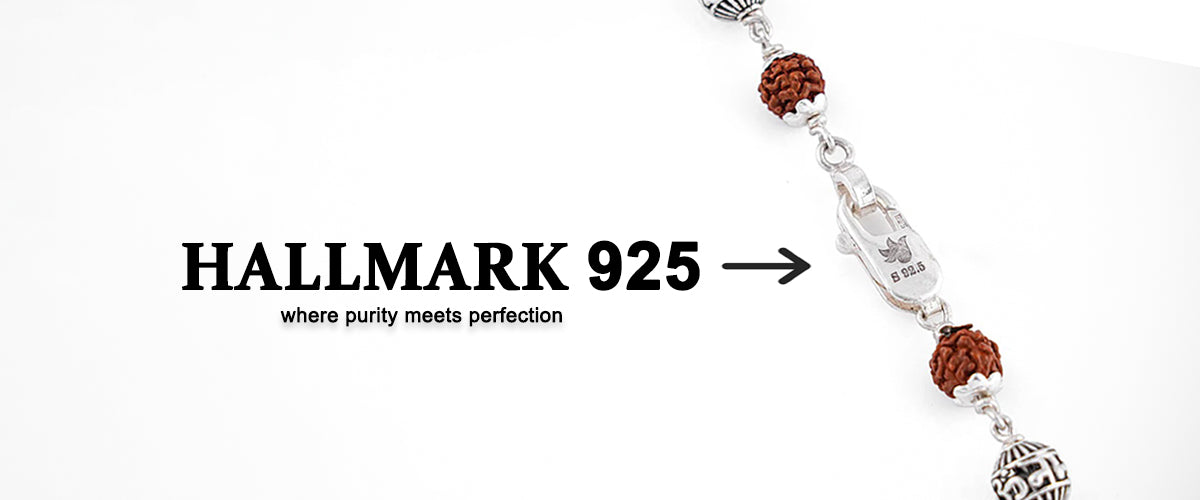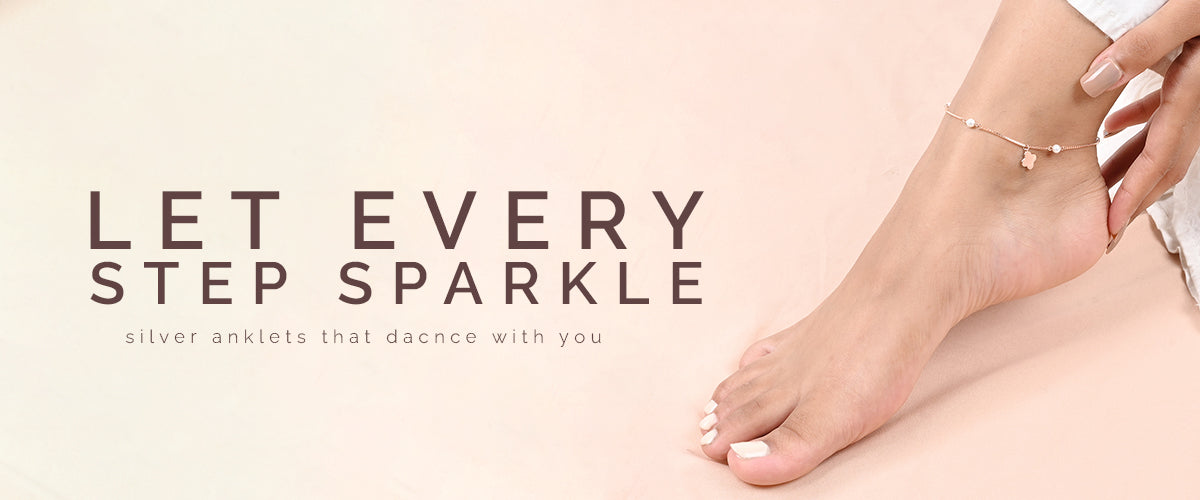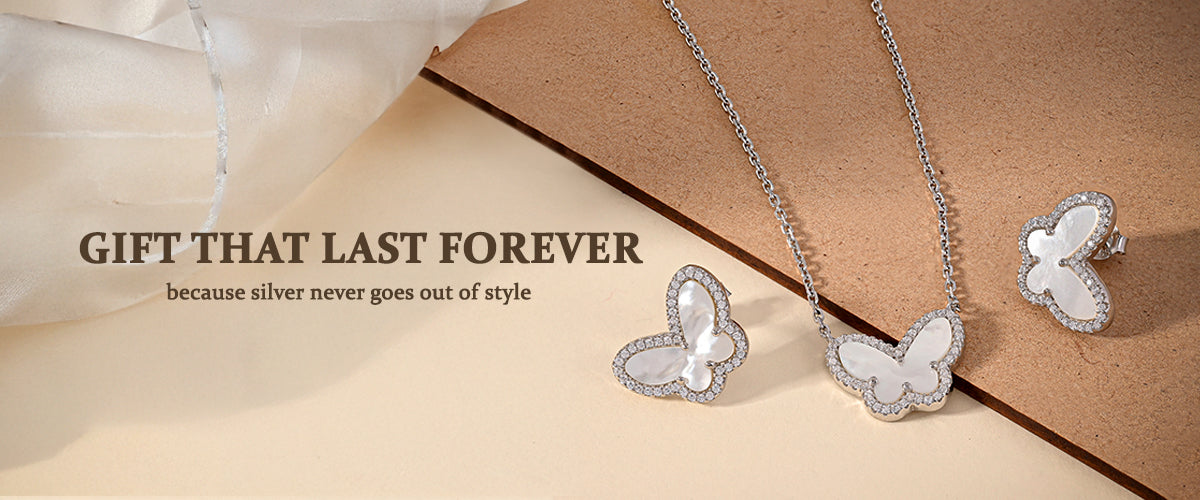How to Check Hallmark on Silver Jewellery

When you buy silver jewellery, you receive more than simply a gorgeous piece of jewellery. You also get something precious that will last a long time. Finding a hallmark is the best approach to be sure that your silver is authentic and pure. It is a small, legal stamp that an outside entity puts on metal to show what it is made of. It guarantees that the metal is pure enough to meet specified criteria. There are many different types of silver available; therefore, it's crucial to know how to check the hallmark on silver jewellery so you can buy it with confidence.
Understanding the Meaning of Hallmarks
-
This figure usually shows you how much pure silver is in the metal. The mark “925” on a piece of sterling silver signifies that it is 92.5% pure silver and 7.5% of another metal, usually copper, to make it stronger and endure longer. Fine silver is 99.9% pure and has the number “999” on it.
-
The assay office mark reveals the name of the office that checked and approved the jewellery. In many countries, this is a sign of a town or city. In the UK, a leopard's head is typically used to represent London, an anchor to represent Birmingham, and a castle to represent Edinburgh. You can be sure that a third party you can trust has thoroughly looked at the jewellery if you see this mark.
-
There is a letter in various ways of hallmarking that shows the year the item was checked. This is notably true in the UK. Every year, the letters in this approach vary, and the way the letters look can also change. This is an interesting trait for collectors, and it's a terrific method to tell how old a piece of silver is.
-
A maker's mark is the unique stamp of the individual who manufactured the object, like a silversmith or a manufacturer. People often use a logo or a group of letters. The maker's mark lets you find the item and show where it comes from. It's the artist's signature that proves the work is good.
Explore silver jewellery by Touch925 and ensure every piece you buy is truly authentic.
Locating the Hallmark on Your Jewellery
-
The marking on a ring is usually on the inside of the band. A jeweller's loupe or a sharp magnifying lens might help you view it better. It's necessary to look very carefully because some marks are quite small and may fade with time.
-
The hallmark is usually on the clasp or a little metal tag near the clip on a chain or bracelet. These are usually the strongest elements of the item and are easy to inspect. The mark might be on the back of the charm if the piece has a little charm or pendant on it.
-
Most of the time, the mark on earrings is on the back of the post or on the lever-back clasp. If the earrings hang down, it could be because they are on a small jump ring or tag that connects the drop to the hook. For bigger items, the mark could be stamped on the back of the earring itself.
-
The hallmark is usually stamped on the interior of bigger silver pieces, including cuffs and bracelets. The marks on small things are usually smaller and harder to see, but you still require good lighting to view them clearly.
Understanding Purity and Authenticity
-
What is the difference between fine silver and sterling silver? There are 92.5% pure silver and 7.5% additional metals in sterling silver (.925). Fine silver, or pure silver (.999), is too delicate and easy to break when it comes to jewellery. Because of this, a .925 hallmark doesn't suggest the quality is poorer; it signifies the silver has been made stronger so it will endure longer.
-
Be aware of marks that don't appear like conventional hallmarks. This is how to tell if a mark is fake. If something bears the words “EP”, “EPNS”, or “Silver Plated” on it, it is not actual silver. Instead, it is constructed of a base metal with a thin layer of silver on top of it. These things aren't worth much on their own, and over time, they will get dirty and chipped.
-
This is a simple test you can do at home to help you find a sign. Pure silver does not have any magnetic properties. If a strong magnet attaches to your jewellery, it's likely not real silver. This test should only be done on the main body of the piece, though, because clasps and other minor pieces can have magnetic steel springs inside them.
-
Real silver tarnishes over time when it comes into contact with air and water. You should see black stains on the item when you rub it with a soft white towel. This signifies that the piece is made of actual silver. If the piece doesn't have any blemishes or a strong metal scent, it's probably not real silver.
Learn how to identify hallmarks on silver jewellery so you can make every purchase with confidence and clarity.
Why Hallmarking is a Guarantee
-
A symbol shows that a product is legitimate and of good quality, which protects consumers. It protects you from scams and ensures you get what you paid for. You can be confident that silver with a mark on it is real and worth the money if you buy it.
-
Hallmarking is a standard in the jewellery sector that ensures fair trade and sets a high standard. The market is safer for everyone since people are less inclined to sell substandard goods or goods with fake labelling.
-
A multitude of hallmarking processes are accepted all throughout the world. This is helpful for people who buy jewellery from other countries and for people who trade goods with other countries. For instance, everyone understands that a “925” stamp on metal signifies it is sterling silver.
-
Silver jewellery that has a hallmark on it holds its worth better than jewellery that doesn't have a hallmark or is plated. It is a real thing that can be passed down as a family heirloom, since you know it is pure and of great quality.
-
Hallmarking makes sure that the silver used in jewellery isn't mingled with any metals that aren't safe or of good quality. People with sensitive skin need to know this because some base metals might make them unwell.
Check out Touch925 for authentic hallmarked 925 silver jewellery crafted with purity you can trust.


